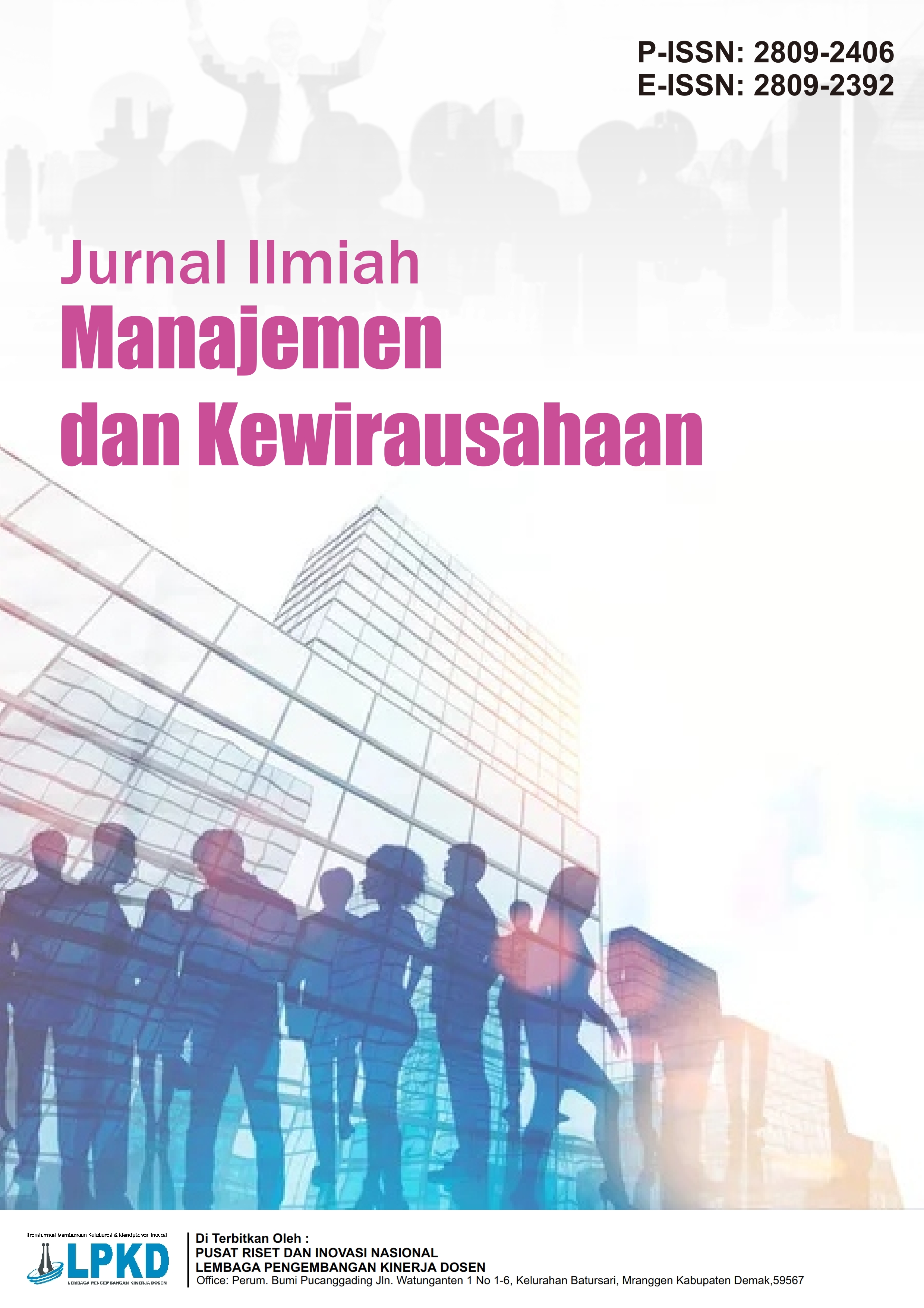Apakah Pemasaran Media Sosial, Pemasaran Influencer, dan Strategi Respons Berpengaruh terhadap Penjualan Coffee Shop X?
DOI:
https://doi.org/10.55606/jimak.v4i1.5237Keywords:
Influencer, Response, Sales, SmartPLS, Social MediaAbstract
This study aims to determine whether social media marketing, influencer marketing, and customer response strategies affect actual sales at Coffee Shop X in Surakarta. The research background is based on the growing use of digital marketing strategies in the food and beverage industry, while their effectiveness in boosting sales remains to be proven. A quantitative approach was employed using the Partial Least Squares Structural Equation Modeling (PLS-SEM) method with SmartPLS 4, supported by normality testing via SPSS. Primary data were collected through an online questionnaire distributed to 100 active customers of Coffee Shop X, while secondary data consisted of actual sales records over 100 days. The results show that all three independent variables have a positive and significant effect on sales, both partially and simultaneously. The coefficient of determination (R²) of 0.147 indicates that the independent variables explain 14.7% of sales variation, while the Q² value of 0.015 suggests low yet relevant predictive ability. These findings imply that coffee shop businesses should optimize digital marketing strategies, strengthen collaborations with relevant influencer s, and improve customer response speed to enhance sales.
References
Cibro, A. R., Simanjuntak, R. A., & Rizal, F. (2024). Do store atmosphere and perceived value matter in satisfying and predicting the millennials' behavioral intention in a café setting? Journal of Social Science, 5(2), 143–157. https://www.academia.edu/download/76115584/3540.pdf
Cibro, M. A., Rahman, D., & Hidayat, M. (2024). Pengaruh social digital marketing Instagram terhadap penjualan konsumen coffee shop di Pekanbaru. Jurnal Ekonomi dan Digitalisasi UMKM, 6(1), 44–56. https://ejournal.umkm.digital.id/index.php/jedu/article/view/1220
De Veirman, M., Hudders, L., & De Jans, S. (2021). The value of influencer marketing for business: A bibliometric analysis and managerial implications. Journal of Advertising. https://doi.org/10.1080/00913367.2020.1857888
Deloitte Digital. (2023). Elevating the human experience. Deloitte. https://www2.deloitte.com/global/en/pages/about-deloitte/articles/customer-experience.html
Freberg, K., Graham, K., McGaughey, K., & Freberg, L. A. (2011). Who are the social media influencers? A study of public perceptions of personality. Public Relations Review, 37(1), 90–92. https://doi.org/10.1016/j.pubrev.2010.11.001
Ghozali, I. (2018). Aplikasi analisis multivariate dengan program IBM SPSS 25. Semarang: Badan Penerbit Universitas Diponegoro.
Hair, J. F., Hult, G. T. M., Ringle, C. M., & Sarstedt, M. (2019). A primer on partial least squares structural equation modeling (PLS-SEM) (2nd ed.). Thousand Oaks, CA: SAGE Publications.
Hair, J. F., Hult, G. T. M., Ringle, C. M., & Sarstedt, M. (2021). Partial least squares structural equation modeling (PLS-SEM) using R. Springer. https://doi.org/10.1007/978-3-030-80519-7
Hair, J. F., Risher, J. J., Sarstedt, M., & Ringle, C. M. (2019). When to use and how to report the results of PLS-SEM. European Business Review, 31(1), 2–24. https://doi.org/10.1108/EBR-11-2018-0203
Jiang, Y., Pongsakornrungsilp, S., & Pongsakornrungsilp, P. (2024). The impact of interactivity on customer purchase intention in social media marketing: The mediating role of social presence. TEM Journal, 13(3), 2133–2145. https://doi.org/10.18421/TEM133-41
Kaplan, A. M., & Haenlein, M. (2019). Siri, Siri, in my hand: Who’s the fairest in the land? Business Horizons, 62(1), 15–25. https://doi.org/10.1016/j.bushor.2018.08.004
Kotler, P., & Keller, K. L. (2016). Marketing management (15th ed.). Pearson Education.
Lou, C., & Yuan, S. (2019). How social media influencers foster relationships with followers: The roles of source credibility and fairness in parasocial relationship and product interest. Journal of Interactive Advertising, 20(2), 133–147. https://doi.org/10.1080/15252019.2020.1769514
Pratiwi, R., & Rachmawati, R. (2023). The impact of social media marketing on consumer purchase intention in the F&B industry in Indonesia. Jurnal Ilmu Manajemen, 11(1), 20–34. https://jurnalilmumanajemen.id/index.php/jim/article/view/232
Putri, D. A., & Siregar, H. (2023). Pengaruh influencer marketing dan strategi digital terhadap niat beli konsumen pada produk minuman lokal. Jurnal Pemasaran Digital, 18(2), 55–67. https://ejournal.pemasarandigital.id/index.php/jpd/article/view/502
Sugiyono. (2021). Metode penelitian kuantitatif, kualitatif, dan R&D (26th ed.). Bandung: Alfabeta.
Tuten, T. L., & Solomon, M. R. (2020). Social media marketing (4th ed.). SAGE Publications. https://books.google.com/books?id=tOF0EAAAQBAJ
Zeithaml, V. A., Bitner, M. J., & Gremler, D. D. (2020). Services marketing: Integrating customer focus across the firm (8th ed.). McGraw-Hill Education.
Downloads
Published
How to Cite
Issue
Section
License
Copyright (c) 2025 Jurnal Ilmiah Manajemen dan Kewirausahaan

This work is licensed under a Creative Commons Attribution-NonCommercial-ShareAlike 4.0 International License.







